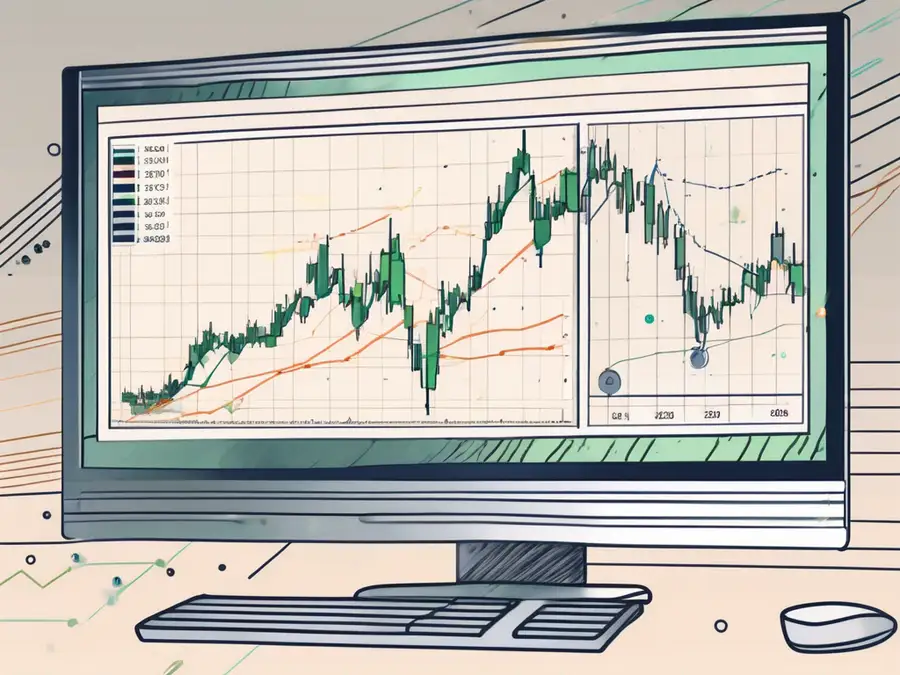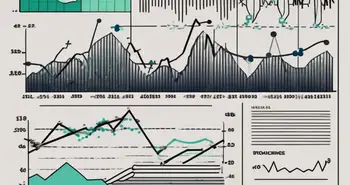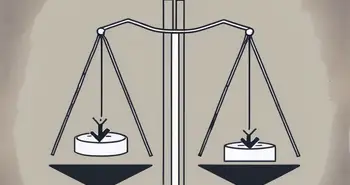OCO Orders Explained: A Smart Way to Manage Risk in Trading

In the world of trading, there are various tools and strategies available to help investors navigate the complex and ever-changing markets. One such tool that has gained significant popularity in recent years is the OCO order. In this ultimate guide, I will take you through everything you need to know about OCO orders, from understanding its mechanics to the advantages and disadvantages of using this trading strategy. So let's dive in and explore the fascinating world of OCO orders!
Understanding OCO Orders
Before delving into the mechanics of OCO orders, it's essential to grasp the concept behind this trading strategy. OCO stands for “One Cancels the Other,” which essentially means that if one part of the order is executed, the other part is automatically canceled.
One Cancels the Other orders allow traders to set both a stop loss and a take profit level simultaneously. This eliminates the need for constantly monitoring the market and manually adjusting the position. OCO orders provide a level of automation and risk management that can be invaluable for traders in today's fast-paced markets.
Definition of OCO Orders
An OCO order is a type of conditional order that allows traders to simultaneously set both a stop loss and a take profit order on a single position. It is an effective way to limit potential losses and lock in profits without constantly monitoring the market.
The Importance of OCO Orders in Trading
OCO orders play a crucial role in trading by providing a disciplined approach to risk management and profit-taking. By having predefined stop loss and take profit levels, traders can ensure that they stick to their trading plan and avoid emotional decision-making.
Furthermore, OCO orders can help traders to mitigate risk by automatically adjusting their positions in response to market movements. This feature is particularly useful in volatile markets, where sudden price fluctuations can lead to significant losses.
The Mechanics of OCO Orders
Now that we have a solid understanding of what OCO orders are and why they are important, let's take a closer look at how these orders work.
How OCO Orders Work
When placing an OCO order, traders set two price levels: the stop loss price, which is the point at which the position will be automatically closed to limit potential losses, and the take profit price, which is the point at which the position will be automatically closed to secure profits.
If the market reaches the stop loss level, the OCO order will trigger a market order to sell the position. Conversely, if the market reaches the take profit level, the OCO order will trigger a market order to exit the position and lock in profits.
It's important to note that once either the stop loss or take profit level is triggered and executed, the other part of the OCO order will be automatically canceled. This ensures that only one of the two orders is executed, hence the name “One Cancels the Other.”
Components of OCO Orders
In addition to the stop loss and take profit levels, OCO orders typically include additional parameters that traders can set to customize their trading strategy. These may include order duration, order size, and other specific conditions that need to be met for the OCO order to be triggered.
By including these components, traders can fine-tune and optimize their OCO orders to align with their individual trading style and risk tolerance.
Types of OCO Orders
OCO orders can come in various forms, each serving a specific purpose in trading strategies. Let's explore two common types of OCO orders:
Single OCO Orders
A single OCO order is the most basic type of OCO order, where only one position is involved. Traders can set a stop loss and a take profit level for a single trade. This type of OCO order is suitable for traders who have a relatively simple trading plan or are managing smaller positions.
Multiple OCO Orders
Multiple OCO orders involve setting OCO orders for multiple positions simultaneously. This allows traders to manage multiple trades with different stop loss and take profit levels in one go. Managing several positions using multiple OCO orders can be particularly beneficial for active traders or those who employ more complex trading strategies.
Advantages of Using OCO Orders
Now that we have a solid understanding of how OCO orders work, let's explore some of the benefits of incorporating this trading strategy into your approach.
Risk Management with OCO Orders
One of the significant advantages of using OCO orders is that they enable traders to manage risk more effectively. By setting a predetermined stop loss level, traders can limit potential losses and protect their capital in the event of adverse market movements.
Additionally, OCO orders remove the emotional aspect from decision-making, which can often lead to impulsive and irrational trading decisions. This automated approach ensures that traders stick to their risk management plan and avoid making hasty and potentially costly mistakes.
Profit Maximization with OCO Orders
Another key advantage of OCO orders is their ability to help traders maximize profits. By setting a take profit level, traders can automatically exit their positions once their desired profit target is reached, ensuring that they don't miss out on potential gains.
This feature is particularly valuable in volatile markets, where prices can fluctuate rapidly. With OCO orders in place, traders can rest assured that their positions will be automatically closed at their desired profit level, even if they are unable to monitor the market in real-time.
Disadvantages of Using OCO Orders
While OCO orders offer numerous advantages, it's important to be aware of their limitations and potential risks. Let's explore some of the drawbacks of using this trading strategy:
Potential Risks of OCO Orders
As with any trading strategy, there are risks involved when using OCO orders. One of the main risks is the execution risk, where the order may not be executed precisely at the desired price due to rapid market movements or liquidity issues.
Traders must also be mindful of slippage, which refers to the discrepancy between the expected execution price and the actual execution price. Slippage can occur when there is a sudden change in market conditions, leading to a difference between the requested price and the actual executed price of the OCO order.
Limitations of OCO Orders
Another limitation of OCO orders is that they may not be available on all trading platforms or for all financial instruments. It's crucial for traders to check with their broker or trading platform to ensure that OCO orders are supported before implementing this strategy.
Additionally, OCO orders are not suitable for all trading styles or strategies. Traders who prefer a more hands-on approach or those using more complex trading techniques may find other order types or strategies to be more suitable for their needs.
FAQ
What is an OCO order?
An OCO order, short for One Cancels the Other order, is a type of conditional order that allows traders to set both a stop loss and a take profit level on a single position. If one part of the order is executed, the other part is automatically canceled.
How do OCO orders work?
When placing an OCO order, traders set a stop loss level and a take profit level. If the market reaches the stop loss level, the position is automatically closed to limit potential losses. Conversely, if the market reaches the take profit level, the position is automatically closed to secure profits. Once either the stop loss or take profit level is triggered, the other part of the OCO order is canceled.
What are the advantages of using OCO orders?
OCO orders offer several advantages, including effective risk management by setting a predefined stop loss level, and profit maximization by automatically exiting positions at the desired profit level. OCO orders also remove the emotional aspect from decision-making, ensuring traders stick to their trading plan and avoid making impulsive and costly mistakes.
What are the potential risks of using OCO orders?
Potential risks of using OCO orders include execution risk, where the order may not be executed precisely at the desired price due to rapid market movements or liquidity issues. Traders must also be mindful of slippage, which refers to the discrepancy between the expected execution price and the actual execution price of the OCO order.
Are OCO orders suitable for all trading strategies?
No, OCO orders may not be suitable for all trading strategies or styles. Traders who prefer a more hands-on approach or employ more complex trading techniques may find other order types or strategies to be more suitable for their needs. It's crucial to assess your trading goals and strategy before deciding to use OCO orders.
As an expert in the field of trading, I have personally witnessed the power of OCO orders in managing risk and maximizing profits. One piece of advice I would like to share is the importance of thoroughly understanding and testing your OCO order strategy before implementing it in live trading. It's crucial to have a clear plan and set realistic stop loss and take profit levels based on thorough analysis and risk assessment. Practice using OCO orders in a demo trading environment to build confidence and ensure your strategy aligns with your trading goals.
Conclusion
OCO orders are a valuable tool for traders seeking to manage risk and maximize profits in the fast-paced world of trading. By understanding the mechanics of OCO orders and the advantages and disadvantages of this trading strategy, you can make informed decisions and optimize your trading approach.
Remember to always assess your risk tolerance, customize your OCO orders to align with your individual trading style, and continually monitor and adjust your strategy as market conditions change. With proper planning and execution, OCO orders can be a powerful weapon in your trading arsenal.
Ready to take your trading to the next level with the power of OCO orders? Discover Morpher, the revolutionary trading platform that leverages blockchain technology to offer zero fees, infinite liquidity, and a unique trading experience. With Morpher, you can manage risk and maximize profits across a variety of asset classes, from stocks and cryptocurrencies to unconventional markets. Sign up now to enjoy benefits like fractional investing, short selling without interest fees, and up to 10x leverage. Plus, with the Morpher Wallet, you maintain full control over your funds. Sign Up and Get Your Free Sign Up Bonus today, and transform the way you trade with Morpher!

Disclaimer: All investments involve risk, and the past performance of a security, industry, sector, market, financial product, trading strategy, or individual’s trading does not guarantee future results or returns. Investors are fully responsible for any investment decisions they make. Such decisions should be based solely on an evaluation of their financial circumstances, investment objectives, risk tolerance, and liquidity needs. This post does not constitute investment advice.

Painless trading for everyone
Hundreds of markets all in one place - Apple, Bitcoin, Gold, Watches, NFTs, Sneakers and so much more.

Painless trading for everyone
Hundreds of markets all in one place - Apple, Bitcoin, Gold, Watches, NFTs, Sneakers and so much more.








